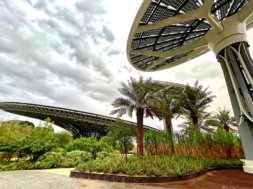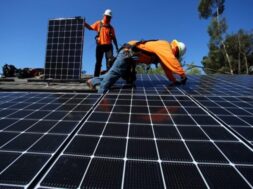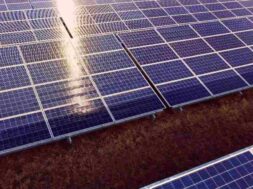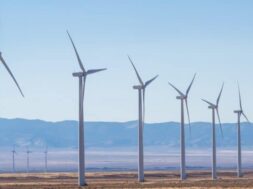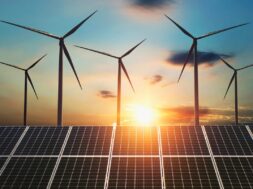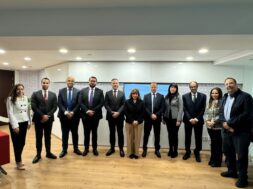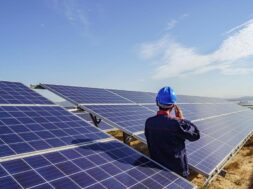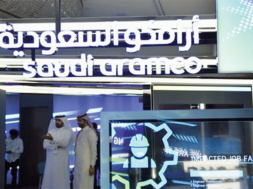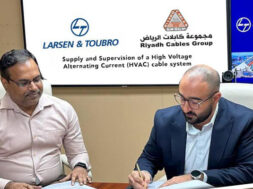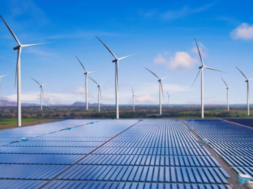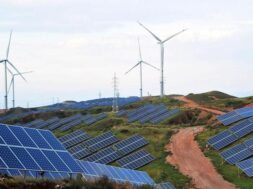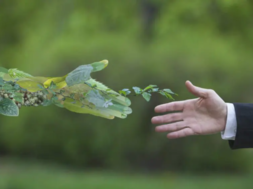
At the Expo 2020 Dubai and beyond, Blaine Brownell explores how the region is investing in renewable and solar energy, from solar farms to E-Trees.
Renewable energy has found a receptive audience in an unexpected place. In recent years, the Middle East has been investing heavily in solar power and other renewable energy technologies. Electricity generation from renewables doubled in the region between 2010 and 2020 to 40GW and it is anticipated to double again by 2024.
Given that the Middle East is home to some of the world’s largest petrochemical reserves and are the leading oil exporters, this news may be unexpected to those outside the region. However, there are several drivers motivating this trend. The volatility of oil prices has made fossil fuels a risky investment, and renewable technologies are increasingly cost-competitive with fossil fuels. Additionally, the Middle East receives ample sunlight and is home to vast, relatively unpopulated desert landscapes optimal for solar-energy harvesting. These solar farms are less expensive to set up and maintain than traditional petrochemical plants—and they are also much cleaner.
In the United Arab Emirates, the combination of increasing natural gas prices and decreasing solar PV costs has made renewable energy more attractive. The country aspires to derive half its energy from non-fossil fuel sources by 2050 and aims for 20% of its electricity to be produced from these sources within three years. The UAE’s clean energy aspirations are on display at the Dubai Expo 2020, both in the form of active applications and presentations of experimental research.
The Terra Pavilion, one of the three primary thematic destinations at the Expo, is a solar energy machine. Designed by Grimshaw Architects with engineer Buro Happold, the pavilion consists of a monumental solar array that also functions as a shade structure and water collector. The array consists of over 20,000 square feet of mono-crystalline PV panels affixed to a large space frame. Reminiscent of a giant shade tree, the funnel-shaped structure forms a massive, tilted 360-degree cantilever that hovers above the exhibition structures and landscaped gardens below.
The pavilion is also surrounded by 19 smaller “E-Trees” that are distributed throughout the site. These additional solar arrays, which are between 50 and 60 feet in diameter, supply an additional 28% of the electricity required to achieve a net-zero goal for the complex. The E-Trees actively track the sun throughout the day, rotating 180 degrees to optimize energy-harvesting. Supported by carbon fiber frames, these devices also provide shade and filter dappled sunlight to the gardens below.
Solar power also makes an appearance as a design feature in other Expo pavilions. For example, the roof of the Netherlands pavilion incorporates skylights with encapsulated organic photovoltaic cells. Made by Armor ASCA, these low-carbon thin film cells are translucent, allowing the passage of sunlight. The Marjan van Aubel Studio added a design of colorful patterns to the printed film. The result is a series of continuous light monitors that produce colored moiré effects while filtering the optimal light spectrum for the growth of edible plants within the pavilion.
Renewable energy is also a prominent research topic showcased at the UAE pavilion. For example, engineers at Khalifa University are developing energy-storing ceramics that function as a battery, providing electricity in the absence of sunlight. The ceramics are made of 100% upcycled solid industrial waste, such as incinerator ash and steel slag, and represent a 20% lower carbon footprint compared with virgin materials. Khalifa University mechanical engineering assistant professor Nicolas Calvet launched a startup company called Seramic Materials to commercialize this technology.
Another Dubai-based venture, Solaris Solutions, was founded with similar motivations for energy resilience. Solaris manufacturers readily deployable off-grid systems for standalone applications. The Solaris Box is a compact and portable PV-based solution for generating electricity for lighting, small appliances, and other applications in remote areas. Founder and CEO Ghaith Albastanli credits the unstable geopolitical climate of the Middle East as an inspiration for the company. “We live in a region full of conflicts and crisis, and we are in an era where accessing electricity is a crucial tool for our daily needs,” Albastanli states on the Solaris site. “So, as a passionate and a responsible individual, I believe it’s our duty to facilitate the reaching of electricity to people far and wide.”
Beyond the Expo, one need look no further than the Mohammed bin Rashid Al Maktoum Solar Park for signs of the coming renewable energy revolution in the Middle East. Located in the expansive desert about 30 miles south of Dubai, the massive facility is the largest single-site solar park, with 5,000MW generation capacity expected by 2030. Other projects, including a 3.2 million solar panel facility south of Abu Dhabi—competing for the title of the largest single-site solar park—are being developed in earnest. “It’s actually interesting to have a solar power plant in a country that’s rich with oil and natural resources like gas,” said an Abu Dhabi project official to the Business Standard. “Solar energy is the future and that’s how we see it.”
